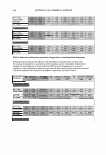ADHESION FAILURE IN HAIR 363 Figure 13. Endocuticular failure from stretching hair (18). Reprinted with permission of the journal of the Society of Cosmetic Chemists. failure is dependent on the RH and the extension rate and does not occur under normal tensile-loading conditions in the Instron or the Diastron (19). CUTICLE CHIPPING IN THE WET ST ATE Studies on cuticle fragmentation (20) have shown that more cuticle chipping occurs in the wet state than the dry state and that more chipping occurs as fiber swelling increases. Cuticle chipping can be induced in wet hair by combing or simply by shaking hair snippets in water or other solvents where hair fibers are rubbed against each other by the shaking action. Combing involves compression and shear stresses, while shaking fiber snippets involves shear stresses with minimal external compression forces. In either case, a primary area of weakness is where the swollen endocuticle merges with the highly cross-linked rigid exocuticle (Figure 11) in the outermost cuticle cells that are most exposed to the extension and abrasive actions. In both cases, it is likely that endocuticular failure at a scale edge occurs first, followed by transverse cracking across a small scale segment to produce a cuticle chip. Obviously, those raised scales from prior beta-delta failure and other damaging actions in the dry state will chip off during wet rubbing. However, since combing and shaking wet hair is primarily a wet-state phe nomenon, beta-delta failure is not directly involved, and in that manner wet state chipping differs from dry-state cuticle chipping. Thus, dry-state cuticle fragmentation involves failure in the cuticle-cuticle CMC, while wet-state cuticle chipping most likely involves failure inside cuticle cells.
364 JOURNAL OF COSMETIC SCIENCE COMBING WHILE HEAT DRYING HAIR As indicated above, wet cuticle chipping occurs while combing and heat drying hair, but another type of fracture that we are concerned with here is depicted in Figure 14. This condition is related to the formation of deep transverse cracks across the cuticle produced by wet extension of hair or by wet extension cycling (Figure 9), but with added heat. It essentially consists of heat d ry ing tresses and cyclic extension due to combing. The ve ry top layers of the outermost cuticle scales shrink and become dry and brittle because moisture is driven from these layers by heat d ry ing. Circumferential stresses from high internal swelling pressure, directly adjacent to the d ry brittle layers, cause weakening in the brittle surface layers. Simultaneously, the swollen cortex exerts pressure on the cuticle-cortex CMC, initiating cracks and, at the same time, extension strains from combing act on the cuticle to propagate the cracks transversely. When these cracks approach the dry, brittle cuticle scales, the crack explodes, producing large bulbous cracks (Figure 14) instead of the uniform transverse cracks observed in extension cycling without heat (Figure 9). Ruetsch (private communication) has observed bubbles in the scale faces during thermal drying that could be precursors of these thermal cracks. HAIR DAMAGE AND FAILURE OF ADHESION Damage to hair generally leads to an increase in step fractures, multiple step fractures, fibrillation, and splits (16). An undamaged cuticle inhibits step fractures by interfering with fracture propagation along the fiber axis. Thus, an undamaged hair with no flaws (including no medulla) will be more likely to provide smooth fractures, especially when wet or at a high RH, than step fractures, fibrillation, or splits. Karnath and Weigmann (12) have described the formation of step fractures in two ways: After a fracture is initiated by the formation of cracks perpendicular to the fiber axis, but not completely Figure 14. Deep ovoidal cracks across cuticle from simultaneously heat drying and combing wet hair (1). Reprinted with permission of Springer-Verlag.
Purchased for the exclusive use of nofirst nolast (unknown) From: SCC Media Library & Resource Center (library.scconline.org)






































































































